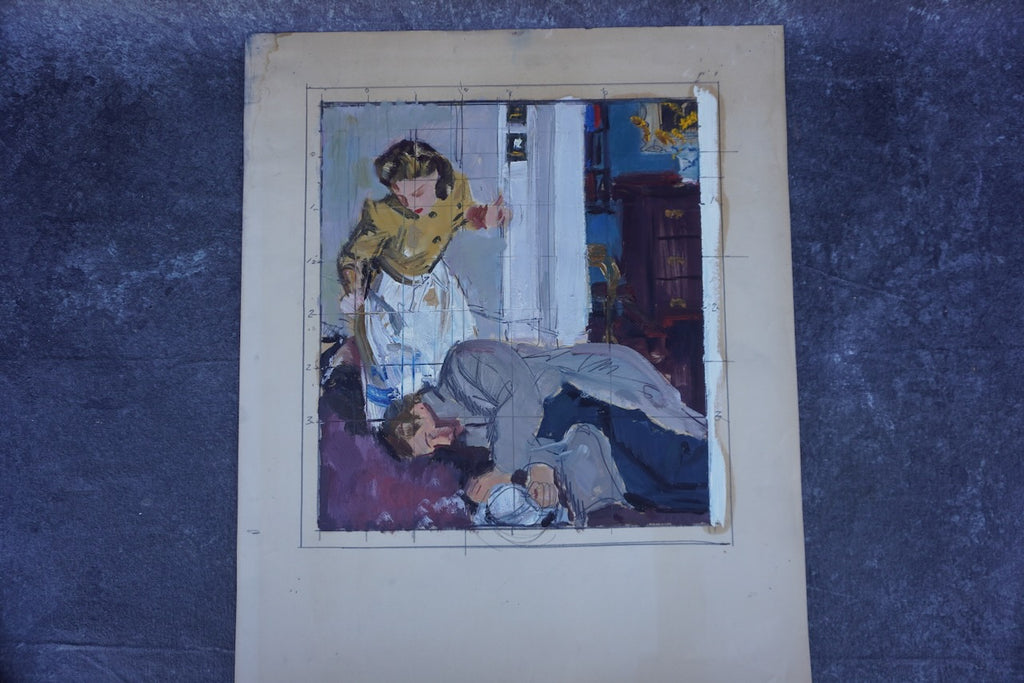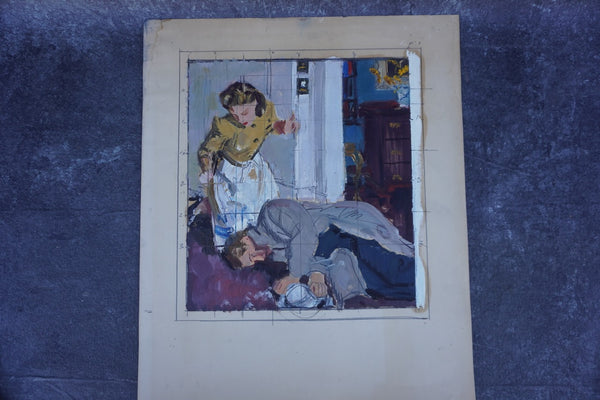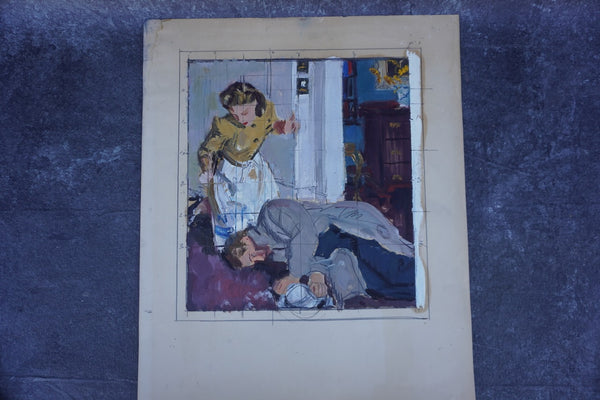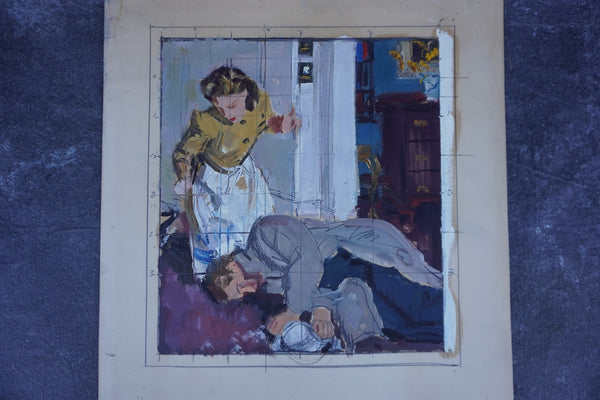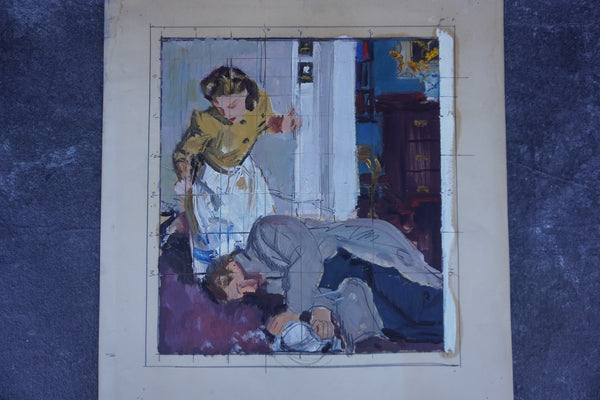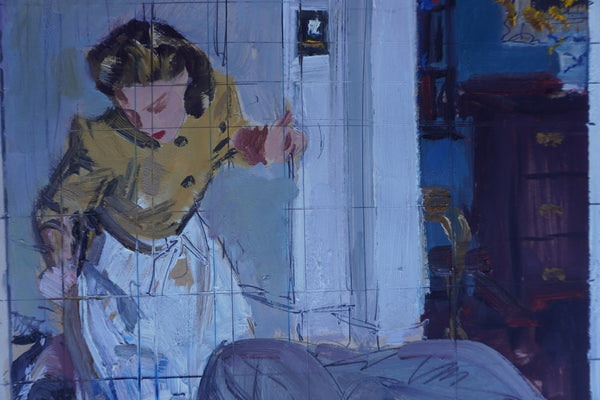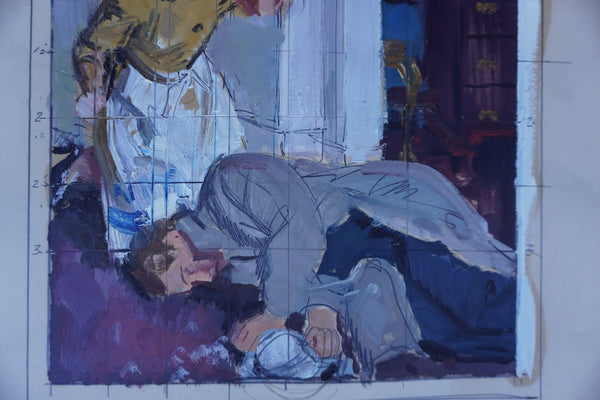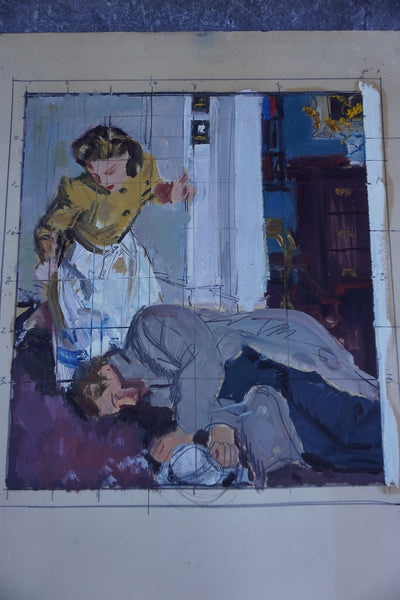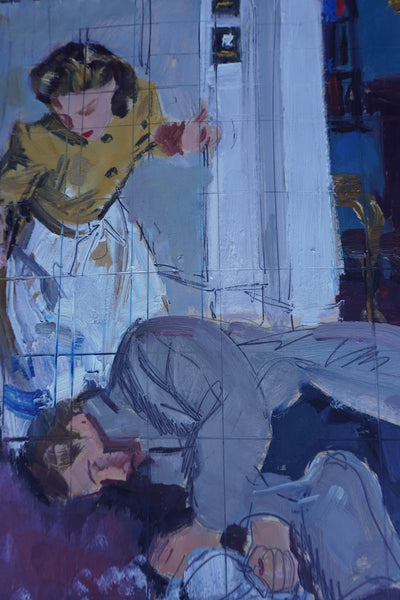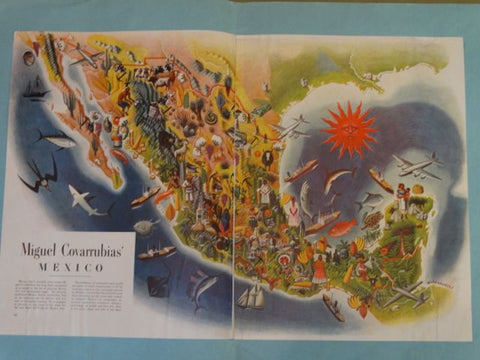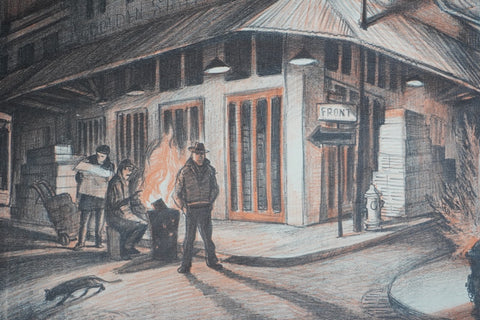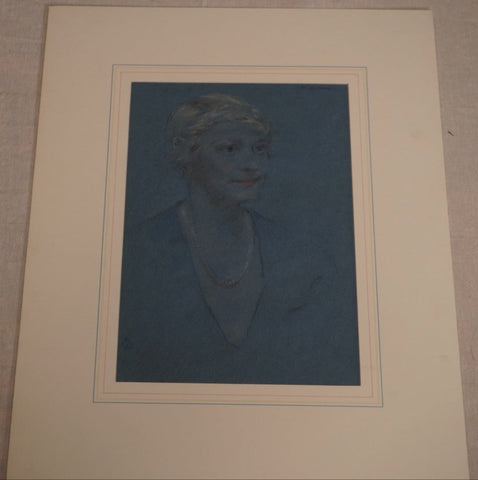Pruett Carter (1891-1956) - Has He Passed Out? Or...? - Original Magazine Illustration Art - Oil on Bristol Paper P3279
A superbly executed mock-up for a magazine illustration: already the figures are alive and involving. We are pretty sure HE's alive, since this scene isn't lit like a noir thriller or a pulp magazine. The setting is domestic, and the light is daylight. We're inclined to speculate that the man is the woman's husband, and she, though very pretty, is definitely no femme fatale in her housewife's apron. It's a domestic crisis, and plenty dramatic.
Pruett Carter was a master of magazine illustration, and it is doubly exciting to see him at work in this sketch and to glimpse his brilliant technique as works out his ideas.
The painting comes to us from the estate of the daughter of the attorney who was left in charge of the artist's estate.
Board measures 17 1/2" x 23".
Studied under Walter Biggs. As art director for Good Housekeeping, Pruett Carter gave himself his first illustration assigment. WWI service. Returned to a 40-year career, in demand for Ladies' Home Journal, McCall's, Good Housekeeping, American Magazine, Collier's, Pictorial Review. Advertising assignments were numerous. Successfully moved from the medium of oil (1920s-1930s) to the faster gouache from the 1940s. Very influential as a teacher in Los Angeles.
Carter taught illustration at the Grand Central School of Art in New York City, with N. C. Wyeth and Harvey Dunn. His students included Lawrence Nelson Wilbur and Perle Fine. He also taught at the Chouinard Art Institute in Los Angeles, and was head of the Illustration department.
His illustrations appeared in Life, Good Housekeeping, McCall's , Ladies' Home Journal, The American Magazine, and Woman's Home Companion. He was art director at Atlanta Journal and Good Housekeeping. Carter was an adept illustrator at the magazine publishing industry, including women's magazines, and anticipated and adjusted his approach as the market changed.
Initially, Carter made Impressionist works, like that of Walter Biggs. He stated, "The illustrator's first function is a problem of composition, of pattern, of design - including the rich contrast of the illustration itself with the type matter and headlines of the story... the illustrator may be likened to the director of a motion picture...He must live the part of each actor. He must do the scenery, design the costumes, and handle the lighting effects." He had adapted a modern style that focused on decoration and page design by the 1950s. He exhibited his works in California.
In 1988, Carter was inducted into the Society of Illustrators' Hall of Fame.

